What are bao buns?
Tradtionally named gua bao and filled with a spiced pork filling, bao buns are those cute little steamed Chinese buns, similar to a taco in shape. The “buns” part of the name is an entirely Western addition and totally superfluous, since bao translates to bun, but it is how many know them.
The buns are made from a yeasted dough and steamed until soft, puffed up and fluffy. Bao can be made in a number of styles, this folded style known as gua (meaning “ to cut by drawing the knife around” due to the way they look like they’ve been sliced) or lotus leaf buns.
Originating in Fujian province, China, they’re becoming more and more popular all over the world and are filled with everything from char siu to spicy chicken to tofu. You name it, it’s amazing in a bao.
Why we love them
These bao buns have the perfect soft and fluffy (like little pillows of dough) yet slightly chewy texture and a wonderful flavour too. They freeze perfectly so make up a big batch and have them at the ready for an easy weeknight dinner.
This post has everything you need to learn how to make bao buns yourself at home and they’re easier than you may think. The dough is very simple, it’s easy to knead and shaping the bao is a breeze. Now you just need to decide how to fill them.
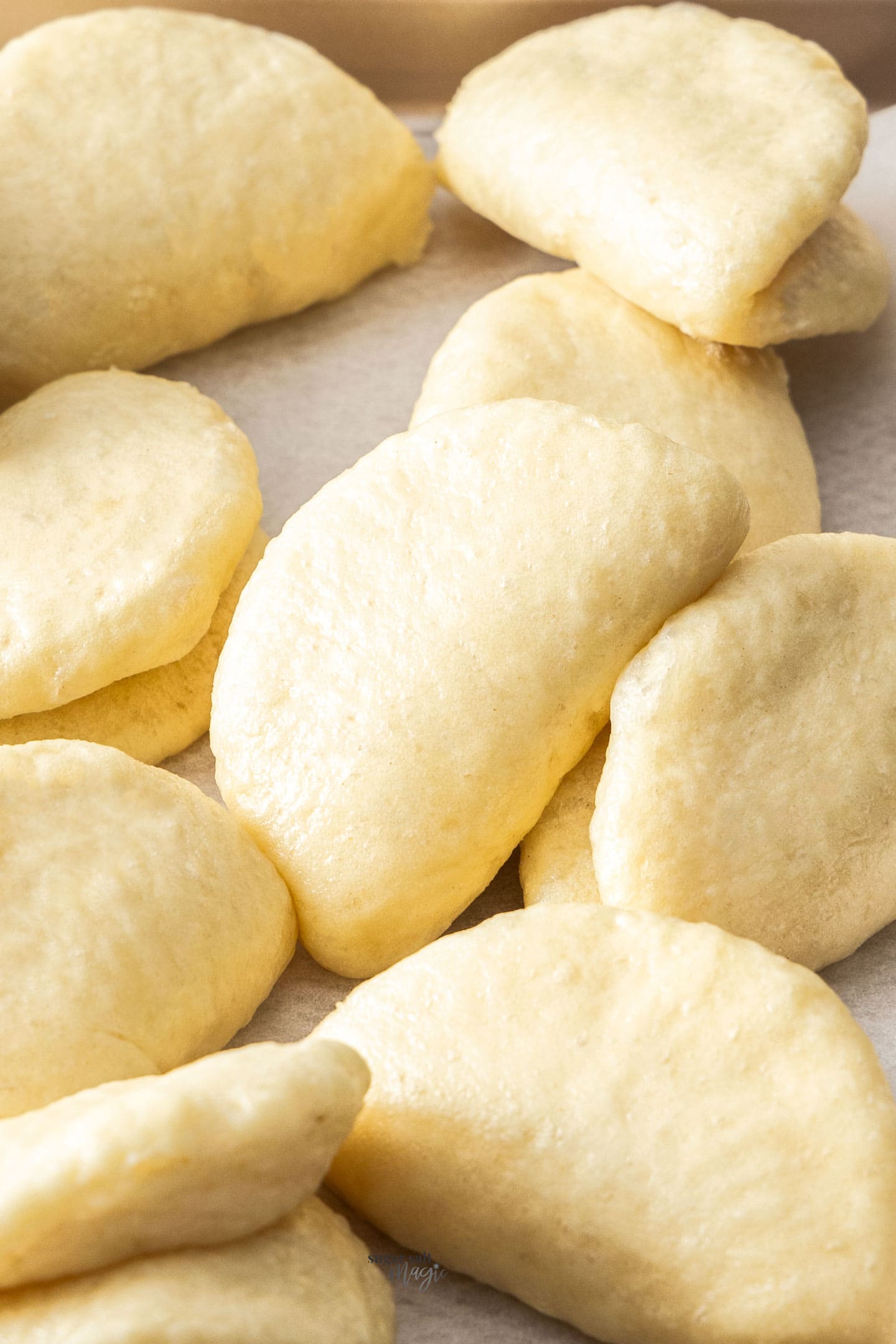
Table of contents
Never Miss a Recipe!
Get the latest recipes straight to your inbox!
Ingredients for bao
The dough has a short ingredients list and is very simple to put together. Researching bao buns, I found there is no single recipe. Many contain milk but some don’t. Some contain rice vinegar. Some have more sugar than others and so on. I did loads of research on bao buns, starting with this School of Wok tutorial and my easy recipe came through trial and error thereafter.
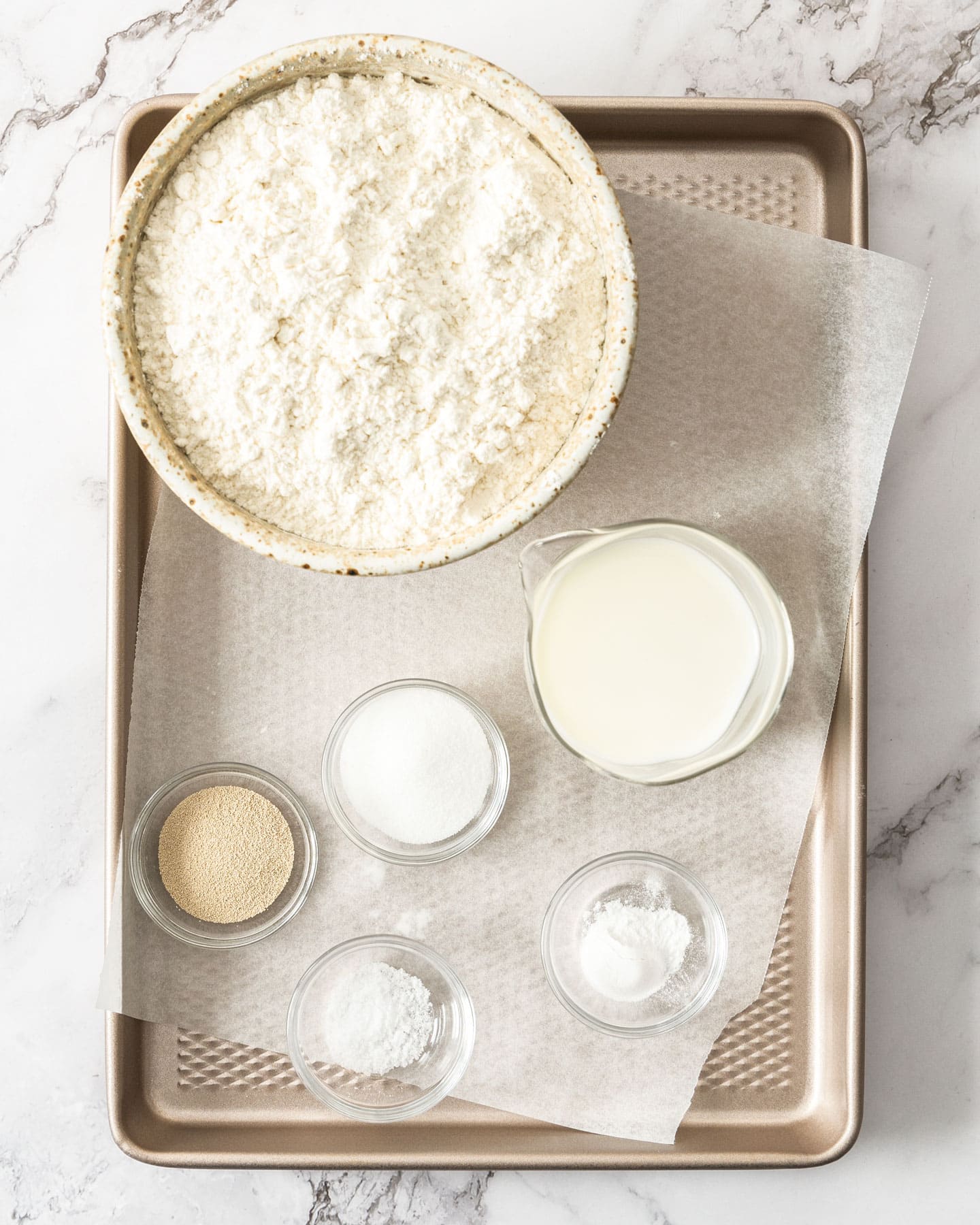
Jump to the recipe for full ingredients and instructions.
- Flour: White wheat flour with a low to medium gluten content is perfect for bao buns, so just plain flour (aka all-purpose flour) will do the trick.
- Milk: Milk adds some richness to the dough since there is no other form of fat in them at all (aka no eggs, no oil).
- Yeast: I use instant yeast or instant dry yeast. You can also use active dry yeast.
- Baking powder: Baking powder is a second leavener in bao and it helps with that puffy, fluffy interior.
- Sugar: There isn’t enough sugar to make them sweet – just enough to add balance and allow the yeast to do it’s thing.
- Salt: Just a little salt. Similar to the sugar, they aren’t meant to be salty; it’s more for balance.
- Water: Yep, simple water rounds the ingredients list out.
Bao dough is very versatile. It’s used to make loads of snacks. Gua bao is the folded style; Baozi or mantou are small round buns (like little sacks almost) filled with savoury or sweet fillings. Bao dough is also used to make pineapple buns – a sweet bun from Hong Kong.
How to make bao buns (step-by-step)
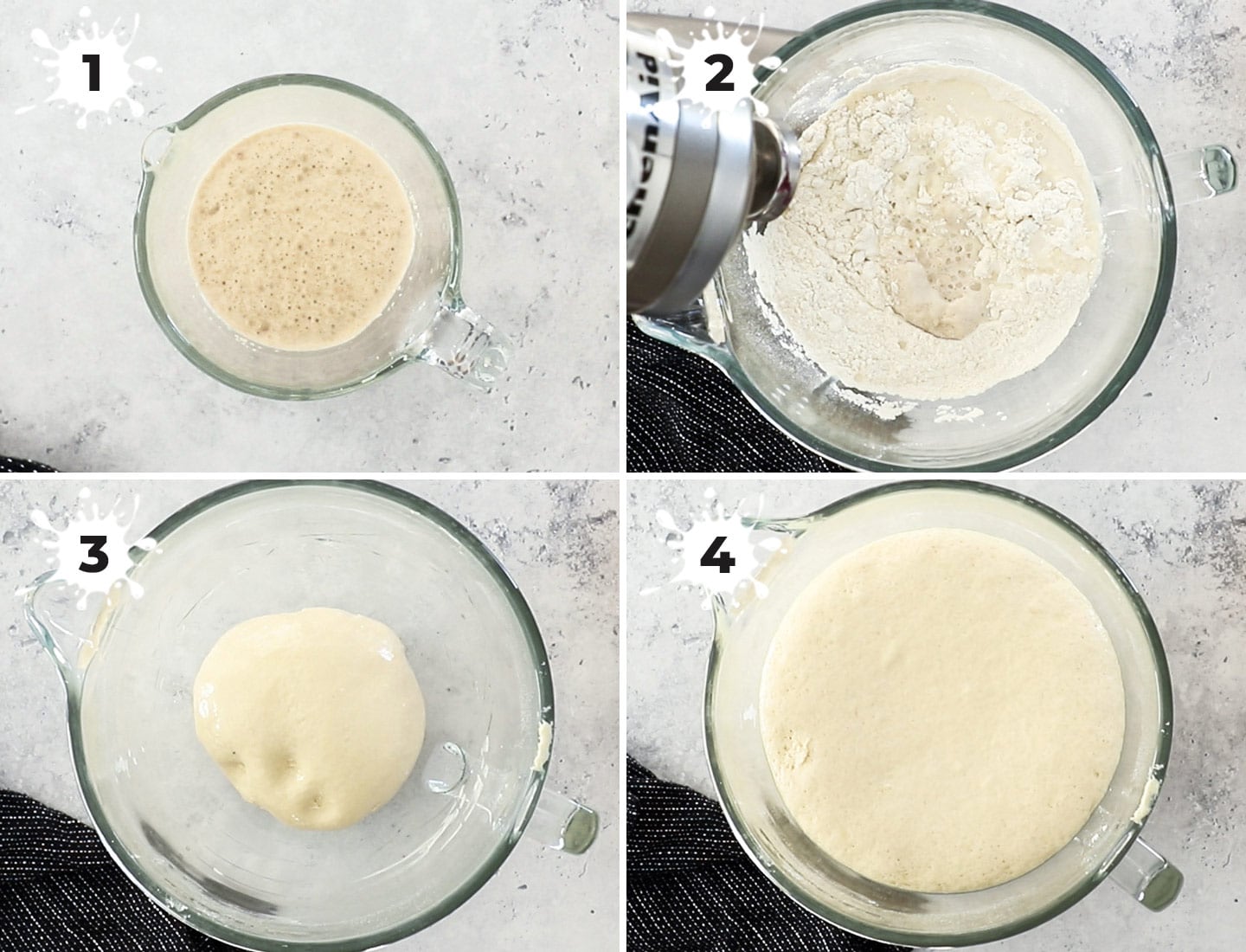
Jump to the recipe for full ingredients and instructions.
How to make bao dough
- Activate the yeast: Mix together warm milk, sugar and yeast and let it soften and start to puff up. This will take between 5 and 10 minutes (photo 1). While this step is not necessary for instant yeast, it is required for active dry yeast. It’s a good habit to get into because it will show you very quickly if your yeast is still good rather than wasting a bunch of ingredients only to find out your dough isn’t rising.
- Make the dough: Mix the yeast mixture with the other dough ingredients in the bowl of a stand mixer (photo 2) and knead for 3-4 minutes. While you can knead it by hand, a stand mixer just makes it quicker and easier.
- Rise: Once the dough is smooth, lightly oil the bowl and place it back in (photo 3). Cover with plastic wrap and leave it in a warm place to rise until doubled in size (photo 4) – 45-60 minutes. I’ve recently discovered my oven has a dough rising setting and it works an absolute treat so check yours if you aren’t sure.
You can see in the photos above, I accidentally let this batch of dough over-proof and it more than doubled. While I don’t recommend letting that happen, it is a very forgiving dough and they still turned out lovely in the end.
Over-proofing can lead to bread or buns deflating or falling flat after baking.
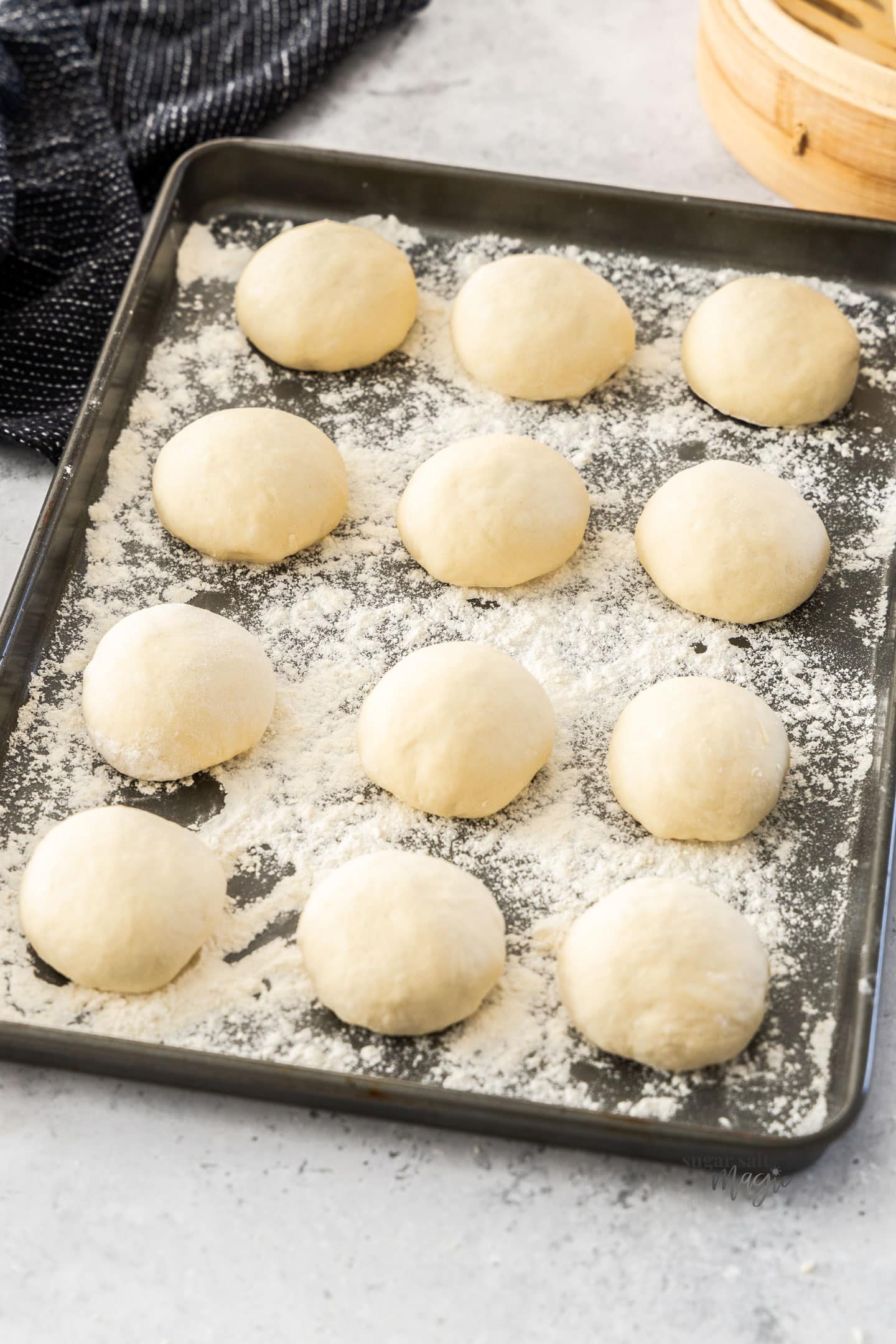
How to shape bao buns
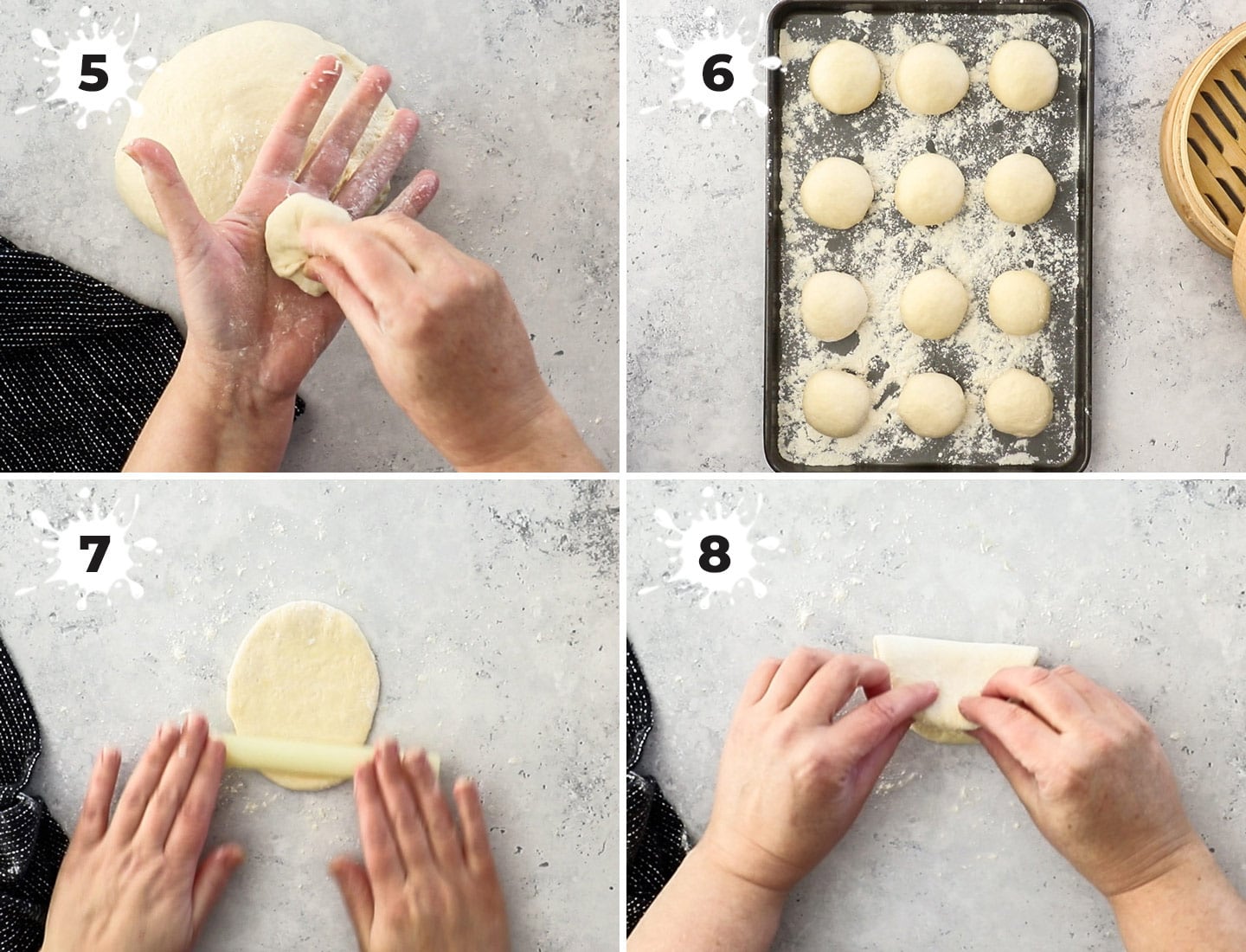
- Divide the dough: Once the dough has doubled, divide it into 12 even portions. I weigh the whole dough, then divide that by 12 and weigh each one so they are all the same size. This might sound like perfectionism, but it actually means the bao will all cook evenly in the same amount of time.
- Shape the portions: Shape each portion into a ball in the palm of your hand and if the dough is too sticky just add a touch of flour so they aren’t sticking to your hands. The easiest way to shape them is to place them into the palm of your non-dominant hand, then use the fingers of your other hand to pinch the sides towards the base (photo 5) over and over until the top, or the part in your palm, is smooth.
- Rest: Rest the dough balls on a lightly floured baking tray (photo 6), covered with a clean tea towel, for just 15 minutes to relax the dough.
- Roll: Roll each ball out to an oval shape about 4-5mm in thickness (photo 7). Try to make the middle section a little thinner than the top and bottom of the oval which will help to give that perfect bao shape.
- Oil and fold: Brush the bao with a little oil, then fold it in half (photo 8). Don’t skip the oil – it stops the bao dough from sticking together in the middle.
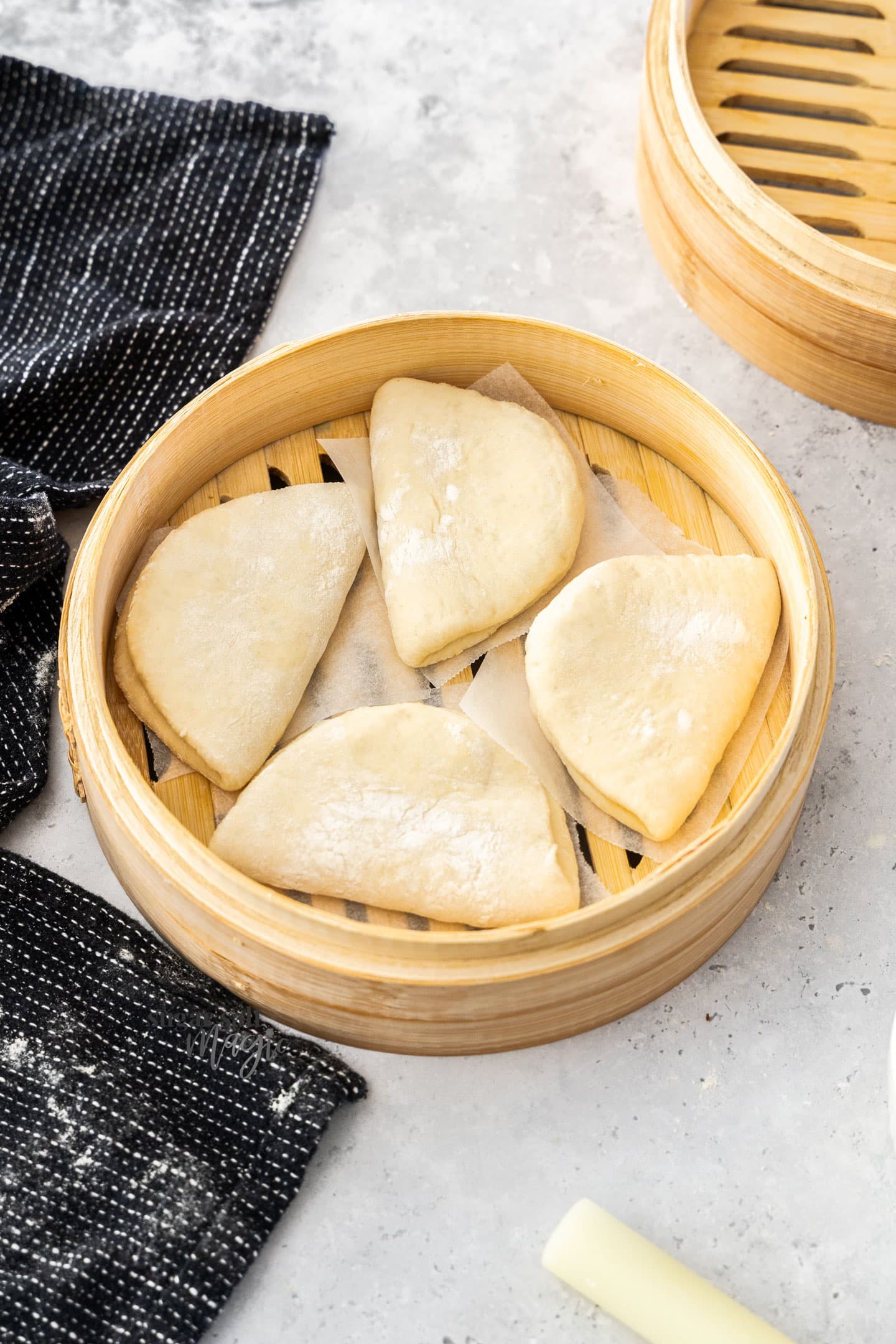
How to cook steamed bao buns
Bao buns are a steamed bun. The classic bamboo steamer is perfect as you can stack them up and they come with a lid of their own, but other types of steamers will work. You’ll need one larger pot with the water in it, then some kind of steaming basket with a lid. If it doesn’t have a lid, just cover the top with foil. Even a metal colander in a saucepan, covered with foil will work.
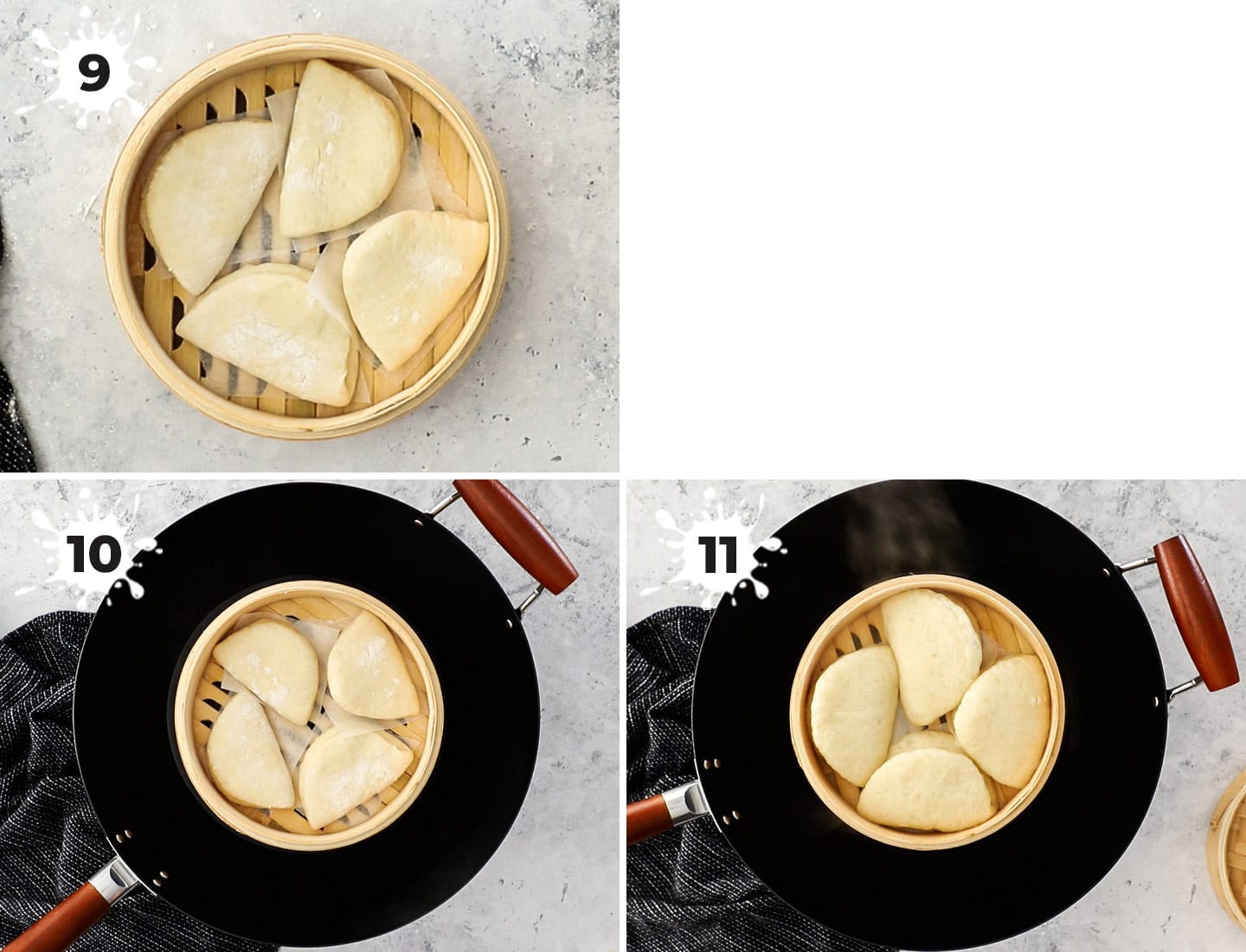
- Place the bao buns into the steamer on pieces of baking paper about 1 inch apart (photo 9).
- Place the steaming basket over simmering water in a large pot or wok (photo 10). Cover the steamer with a lid.
- Steam at a low simmer for 8 minutes until they’re cooked and puffed up (photo 11). So cute!
Tips and tricks
- Don’t skip the oil – it stops the buns from sticking together in the centre.
- Use baking paper squares under each bun so they don’t stick to your steamer
- Have some hot water on hand, just in case it evaporates from the pot within the 8 minutes. I have a boiled kettle on hand.
- Cook them on medium: As soon as the water hits a simmer in the pot, turn the heat down to medium or low-medium so you just have a low simmer going. Now add your steamer basket with the buns.
What to serve with bao buns
There is only so much room inside a bao bun and, unless you’re serving these as an appetiser, you’ll probably want a little extra on the side.
A simple side salad or this Asian slaw is great. You can also steam some vegetables – bok choy, green beans and snow peas are lovely. Why not try a noodle salad or some simple pickled vegetables like kim chi. If you want a real carby treat, add some fried rice on the side.
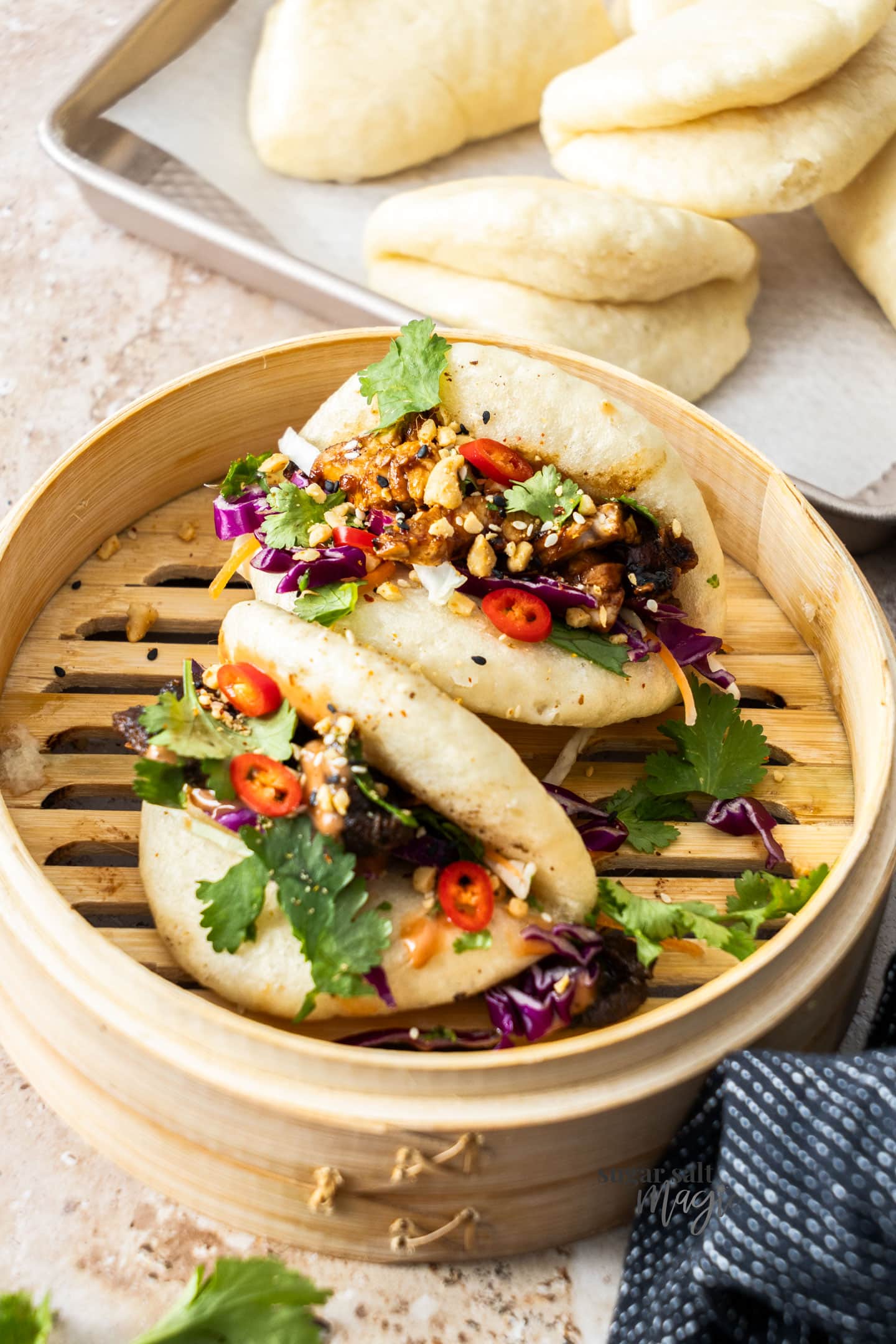
Bao bun filling ideas
Classically, these bao buns, or gua bao are stuffed with cooked pork belly and it’s delicious but these days you can get really creative. Roasted duck is lovely or just seared duck like these duck bao is amazing. Some spicy chicken or some crunchy Korean chicken is another one. Try this honey pepper pork too – so yum! Generally, you’ll stuff in a little cabbage, carrot, cucumber, coleslaw or bean sprouts too.
In the ones shown in the photo, I have added some kale slaw, coriander (cilantro) and a spicy peanut dukkah that I love to make.
You don’t have to stick to meat either. These can be stuffed with some seasoned and fried tofu, for instance.
As for sauces, I can vouch for this gochujang mayo – yum! Kewpie mayonnaise is great too as is hoisin sauce or a combination of the two.
Yield and storage
This recipe makes 12 homemade bao buns.
They freeze perfectly, so you should definitely make a big batch or multiple batches and freeze them ready for easy dinners. To freeze the bao, lay them out in a single layer on a baking tray lined with baking paper and place into the freezer until solid. Once solid, transfer them to a ziplock bag or airtight container and freeze for up to 3 months.
How to reheat bao buns
Bao buns reheat easily in the microwave. Place them on a plate in a single layer, then cover with a sheet of wet paper towel. Heat them for 20-45 seconds, depending on how many you’re reheating, until hot.
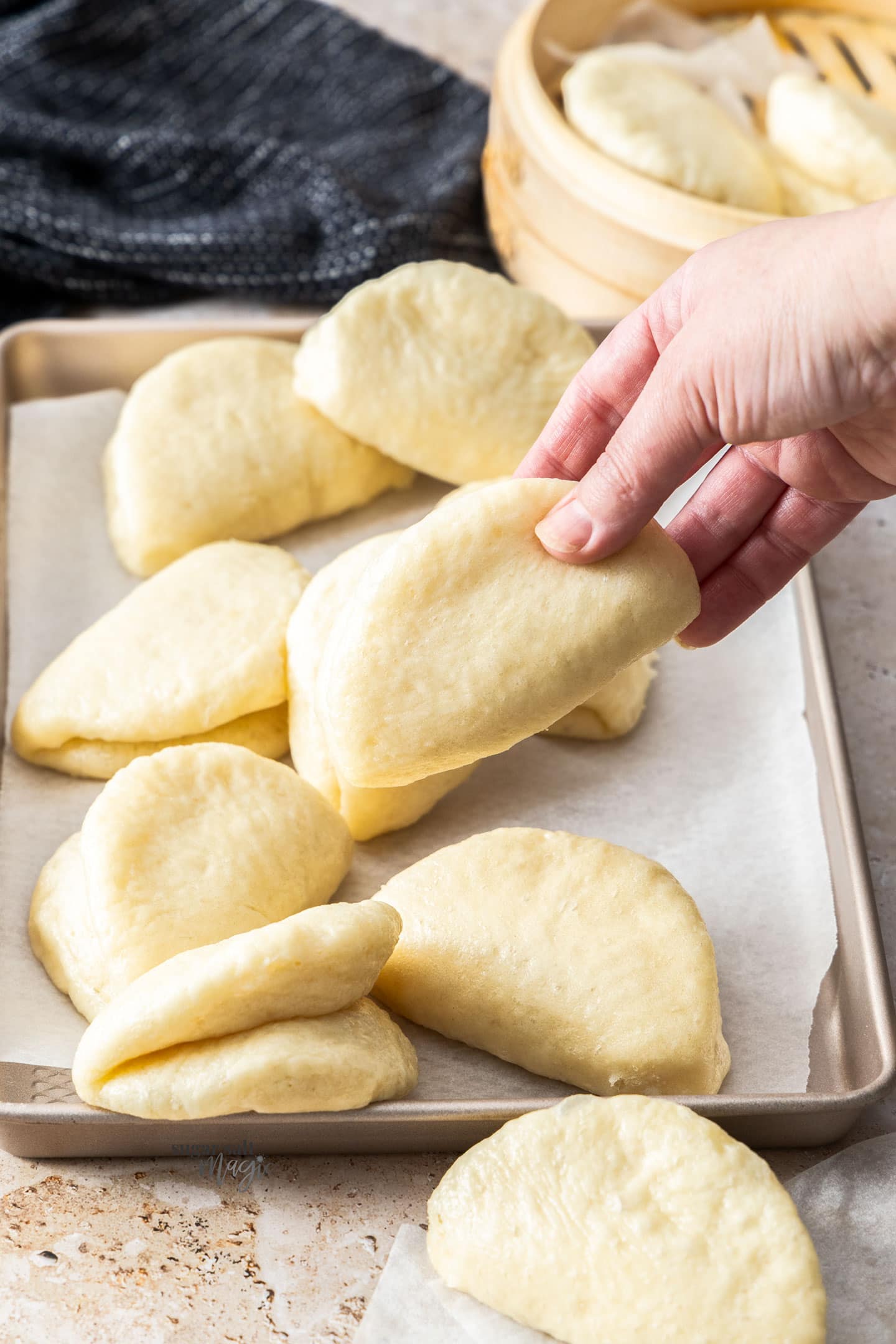
More recipes you’ll love
Did you try this homemade bao buns recipe?
Leaving a rating and comment below the recipe is so helpful!
Hungry for more? Subscribe to the newsletter for free recipes straight to your inbox. Also, follow along on Facebook, Pinterest and Instagram.
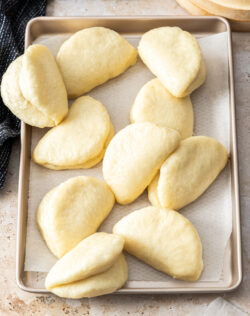
Ingredients
- ½ cup whole milk, warm (not hot)
- 3 teaspoons sugar
- 1 ½ teaspoon instant yeast (or active dry yeast)
- 390 g plain flour
- ½ teaspoon baking powder
- ¼ teaspoon salt
- ¾ cup water, warm (not hot)
- 2 teaspoons vegetable oil (for brushing)
For best results, always weigh ingredients where a weight is provided
Equipment
- Stand mixer – helpful but not absolutely necessary
- Bamboo steamer (notes) and large pot / wok
Instructions
- MAKE THE DOUGH:In a small bowl or jug, combine the warm milk, the sugar and the yeast. Mix well and set aside 5 minutes to activate the yeast (notes).
- In bowl of stand mixer (or by hand, see notes), combine the flour, baking powder and salt. Mix to combine.
- Pour the yeast mixture into the bowl followed by the warm water.
- Using the dough hook attachment, mix to a dough – knead for 3-4 minutes, until it looks smooth. Take it out and just pull it into a ball.
- RISE:Oil the bowl lightly with a little vegetable oil and place the dough back in. Cover with plastic wrap then rest in a warm, draft-free place for 1 hour or until doubled in size. If your oven has a dough-rise setting, use that.
- PORTION:Once the dough has risen, divide it into 12 even portions (to make them perfectly even, weigh the dough and divide the amount evenly by 12, then weigh each individual portion.
- SHAPE:Place a dough portion into the palm of your non-dominant hand. Use the fingers of your dominant hand to pinch the sides into the middle, turning it, over and over until you have a smooth little ball when you flip it over. Repeat with the rest. If you’re finding the dough too sticky, just dust your hands and fingertips with a little flour to help.
- REST:Lightly dust a baking tray with flour, then sit the balls on the tray and cover with a clean tea towel for 15 minutes in a warm spot to rest.
- While they rest, tear off small squares of baking paper about 8cm/3in square – these will be for the prepared bao to rest on in the steamer so they don’t stick.
- ROLL AND SHAPE:With a rolling pin, roll the first ball out to about 4-5mm thick, slightly oval shape. Make the top and bottom points of the oval slightly thicker than the middle.
- Brush a little oil over then fold in half. Place onto one of your squares of paper. Repeat with remaining balls.
- Place the bao buns on their paper squares into a steamer basket (notes) about 1 inch apart.
- STEAM:Heat a wok or large pot with 1 inch of water until simmering then turn the heat down to medium-low (you just want a low simmer the whole time they cook). Place the steamer basket with the bao inside over the water. Cover with a lid (or foil if you don’t have a lid) and steam for 8 minutes.
- Your bao can be used immediately or frozen for later (notes).
- Please take a moment to leave a comment & rating. It's appreciated and so helpful.
Notes
- YEAST: You can use instant yeast or active dry yeast. While instant yeast does not require activating, active dry does. However, even if using instant, step 1 shouldn’t be skipped as it will tell you if your yeast is good to use – if it doesn’t start to look puffy, the yeast is no good and you’ll need to buy a fresh pack. Taking this step prevents the risk of wasting all the other ingredients and time only to find out the dough isn’t rising.
- BY HAND: If you don’t want to use a stand mixer, just use a spoon to mix the ingredients together in a large mixing bowl, then tip it out onto a clean work surface and knead until it looks smooth.
- STEAMER BASKET: I love using a Chinese bamboo steamer; they’re super cheap, last forever and you can stack them up to steam all the buns in one go. That said, any steaming basket will work, just don’t crowd the buns – give them room to puff up and expand.
- FREEZING: While you can keep them in the fridge for a few days, like any bread, they will get more stale as time goes on. Freezing the bao buns stops the staling process and they’ll stay perfect for up to 3 months.
- REHEATING: You can reheat the thawed bao in the microwave or steamer again. Using the microwave, place a wet doubled-over paper towel over the top of the bao on a plate and heat for 30-40 seconds until hot.
This post may contain affiliate links that earn me a small commission for my referral, at no extra cost to you. Thank you for supporting Sugar Salt Magic.

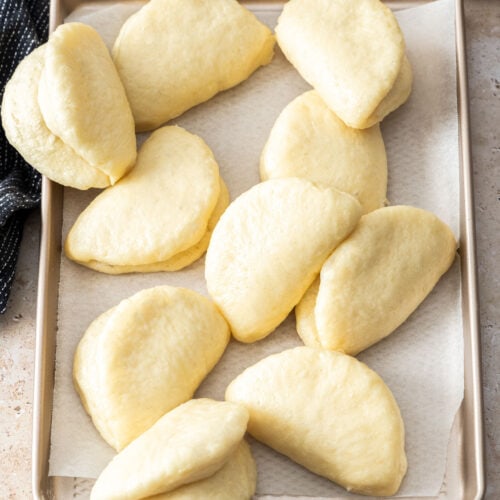
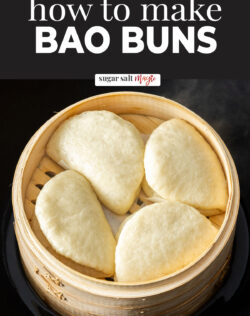

4 Comments on “Bao Recipe”
Hi
Can I freeze the shaped Bao raw , defrost them and bake them when needed ?
Thank you
Hi Nadia. They are best steamed before freezing but once steamed, yes they freeze very well and will taste fresh when you re-warm them.
can these be steamed in the microwave? if so time and power settings
Hi Teresa. I don’t recommend the microwave since they all vary in wattage. They can be warmed up in the microwave though. If you don’t have a steamer, do you have just a regular metal colander? That will work. Just sit it over a large saucepan of simmering water covered with foil.